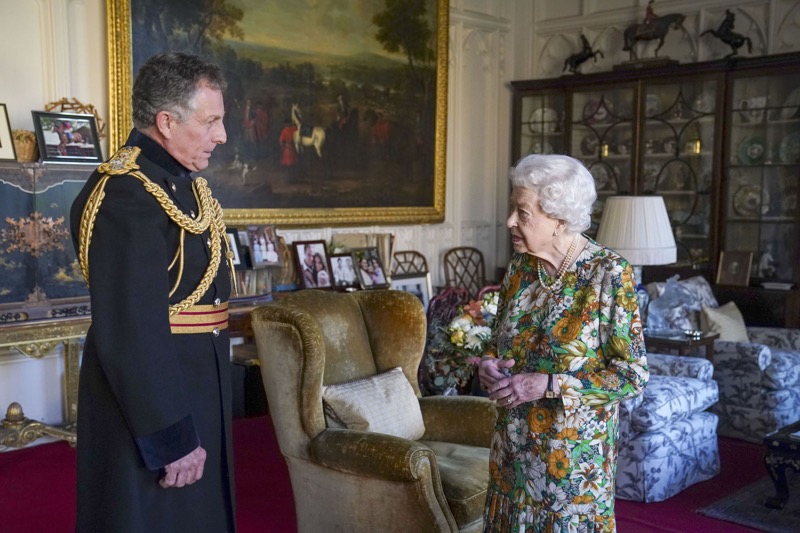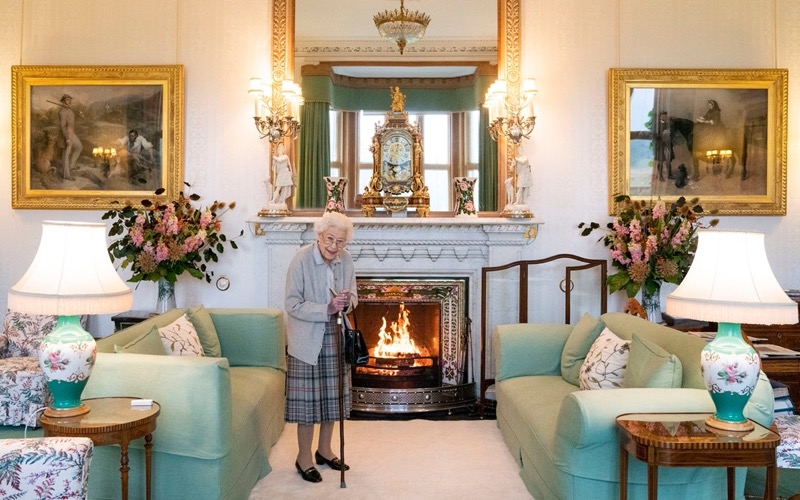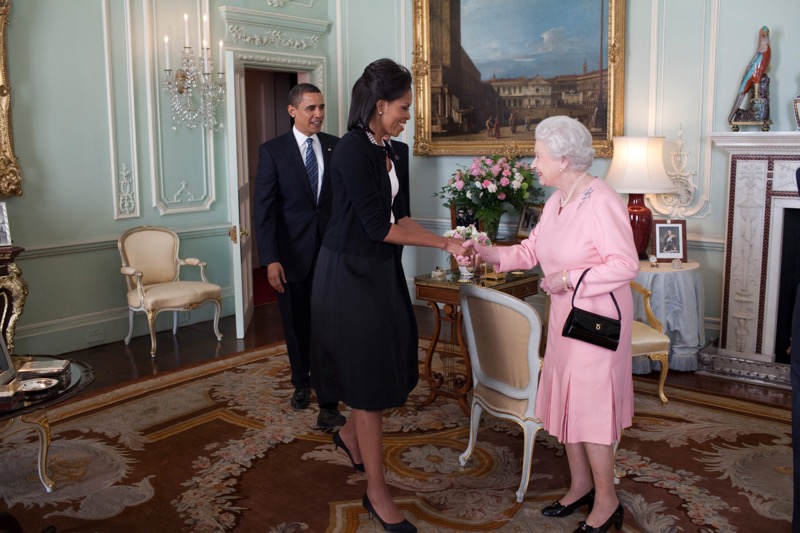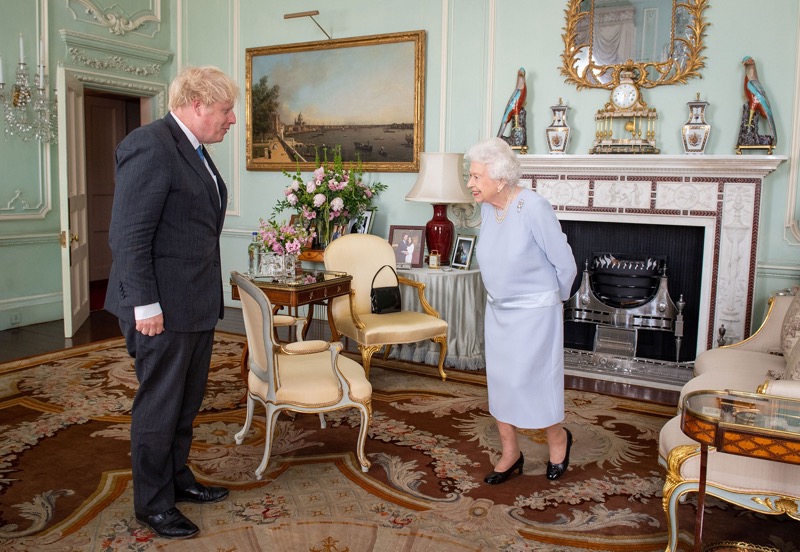Queen Elizabeth II’s design preferences are not well known as her personal taste is not widely publicized, however, from her public appearances and royal residence it is known that she tends to prefer classic, timeless and elegant designs. Queen Elizabeth II’s design preferences tend to be classic, timeless, elegant, and traditional with a touch of British heritage and culture.Her royal residence, Buckingham Palace, has a mix of traditional and modern elements, featuring opulent furnishings, grand chandeliers, and rich textiles, with a color palette that is predominantly neutral, with some pops of color, such as the use of red in the state rooms, it also features artworks and antiques that reflect the British heritage and culture.
Interior design inspired by Queen Elizabeth II may include elements of traditional British design, such as rich colors, luxurious fabrics, and elegant furnishings. The Queen’s love of horses and equestrian sports may also be reflected in the use of equestrian-inspired artwork or decor. Additionally, the Queen’s love of nature may be reflected in the use of natural materials such as wood, stone, and plants in the design. Overall, the design would be classic, timeless, and regal.

In her other residences such as Balmoral Castle, the queen tends to prefer a more rustic, natural, and traditional design, with a lot of natural materials such as wood and stone, and earthy colors, and hunting trophies, landscapes paintings and traditional tartan patterns.
Queen Elizabeth II has several houses and residences throughout the United Kingdom. Some of the most notable ones are:
- Buckingham Palace: The official residence of the queen and the British monarch in London. The palace is the administrative center of the monarchy and is also used for official events and ceremonies.
Buckingham Palace, the official residence of the Queen and the British monarch in London, has an interior design style that is a mix of traditional and modern elements. The palace features opulent furnishings, grand chandeliers, and rich textiles, with a color palette that is predominantly neutral, with some pops of color.
The palace has 775 rooms, including 19 state rooms, 52 royal and guest bedrooms, 188 staff bedrooms, 92 offices, and 78 bathrooms. These rooms are decorated with a mix of antique and modern furniture, paintings, sculptures, and other artworks, many of which have historical significance.
The state rooms, which are open to the public during the summer months, are some of the most spectacular rooms in the palace, and are used for official events and ceremonies. They are richly decorated with opulent furnishings, grand chandeliers, and ornate plasterwork. The color palette is predominantly neutral, with some pops of color, such as the use of red in the state rooms.

The palace also has extensive gardens and grounds, which are a major part of the palace’s design, and are used for official events and ceremonies, as well as for leisure activities.
Overall, the interior design style of Buckingham Palace is opulent, grand, and elegant, with a mix of traditional and modern elements, and an emphasis on British heritage and culture.
- Windsor Castle: The queen’s favorite residence and the largest occupied castle in the world. It has been the family home of British kings and queens for over 900 years, and is also the site of the queen’s weekend retreats and official engagements.
Windsor Castle, the queen’s favorite residence and the largest occupied castle in the world, has an interior design style that is traditional and elegant. The castle has been the family home of British kings and queens for over 900 years and has evolved over time with different monarchs adding their own touch to the decor.
The castle has over 1,000 rooms, many of which are open to the public. These include the State Apartments, which are used for official events and ceremonies, and the Semi-State Rooms, which are used by the royal family for private and semi-public events. The castle also has St George’s Chapel, which is a place of worship and where many royal weddings and funerals have taken place.

The State Apartments are richly decorated with opulent furnishings, grand chandeliers, and ornate plasterwork. The color palette is predominantly neutral, with some pops of color and the use of rich fabrics such as silk, damask, and velvet. The rooms also feature a lot of artwork, such as paintings, tapestries, and sculptures, many of which are of historical and cultural significance.
The castle also has extensive gardens and grounds, which are a major part of the castle’s design, and are used for official events and ceremonies, as well as for leisure activities.
Overall, the interior design style of Windsor Castle is traditional, elegant and opulent, with a mix of historical and cultural elements and an emphasis on British heritage and culture.
- Balmoral Castle: A Scottish estate located in the Cairngorms, it has been a royal residence since 1852 and it’s where the Queen and the Royal family spend their summer holiday.
Kensington Palace, a palace located in London, has an interior design style that is a mix of traditional and modern elements. The palace has been the residence of many members of the royal family, including Prince William, Kate Middleton and their children.
The palace has several state apartments that are open to the public, including the King’s State Apartments, the Queen’s State Apartments, and the Ceremonial Court. These rooms are decorated with a mix of antique and modern furniture, paintings, sculptures, and other artworks, many of which have historical significance.
The palace also has several private apartments that are not open to the public, including the Apartment 1A, which is the residence of the Duke and Duchess of Cambridge. These apartments are decorated with a more modern and contemporary style, and feature a more neutral color palette.
The palace also has extensive gardens and grounds, which are a major part of the palace’s design, and are used for official events and ceremonies, as well as for leisure activities.
Overall, the interior design style of Kensington Palace is elegant, with a mix of traditional and modern elements, and an emphasis on British heritage and culture. The private apartments have a more contemporary feel while the public state apartments have more of a traditional opulent look.

- Sandringham House: A country house located in Norfolk, it’s another favorite residence of the queen and where the Royal family spend their Christmas holiday.
- Kensington Palace: A palace located in London, it’s where Prince William, Kate Middleton and their children live
Interior design inspired by Queen Elizabeth II’s love of horses may include elements such as:
- Equestrian-themed artwork and decor, such as horse statues, horse paintings, and equestrian prints.
- Use of rich brown and black colors, which are often associated with horse tack and equestrian fashion.
- Incorporation of equestrian-inspired elements such as riding boots, saddles, and horseshoes.
- Use of natural materials such as leather, wood, and wool, which are often used in horse tack and equestrian fashion.
- Incorporation of equestrian-inspired patterns, such as plaids or houndstooth, in upholstery, rugs, and window treatments.
- Use of stables and equestrian-inspired motifs in the design, such as stable doors, hay bales and horse-related decorative items like horseshoe shaped candle holders.
Overall, the design would be elegant, timeless and classic with a touch of rustic and natural elements that reflect the love of the Queen for horse riding and equestrian sports.

Interior design inspired by traditional British design and Queen Elizabeth II may include elements such as:
- Rich and warm colors, such as deep reds, greens, and blues.
- Use of luxurious fabrics such as velvet, silk, and wool for upholstery, window treatments, and bedding.
- Elegant furnishings such as chandeliers, armchairs, and sofas with turned wooden legs and ornate details.
- Use of traditional patterns and motifs such as paisleys, plaids, and stripes.
- Incorporation of antique or vintage pieces, such as a grandfather clock, a writing desk, or a vintage map.
- Use of natural materials such as wood, stone, and metal in the design, which can provide an element of warmth and timelessness to a space.
- Incorporation of elements of the British countryside and nature into the design such as floral patterns, landscapes paintings, and natural textures.
